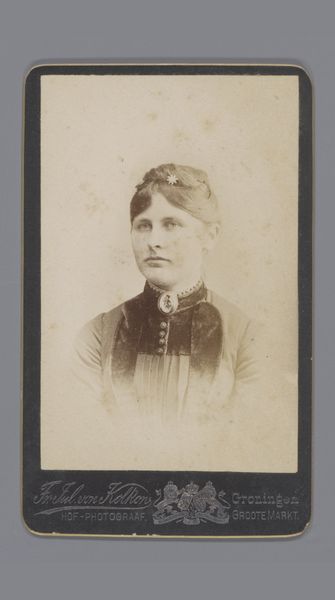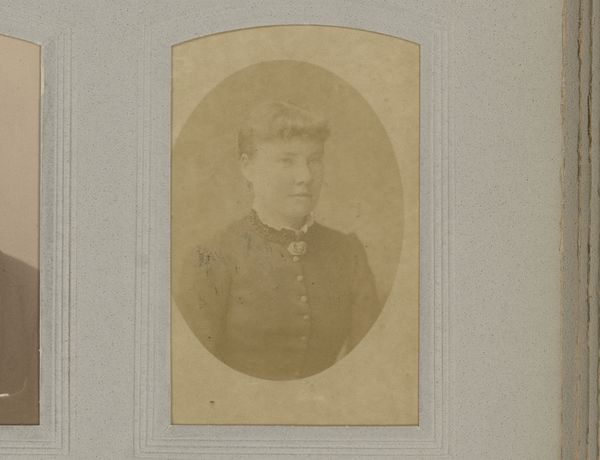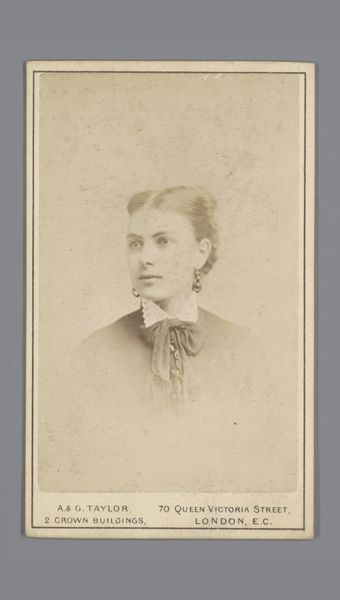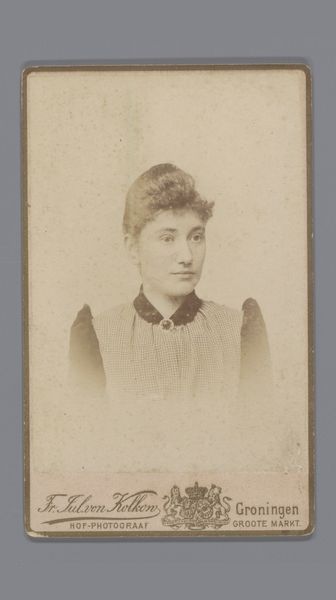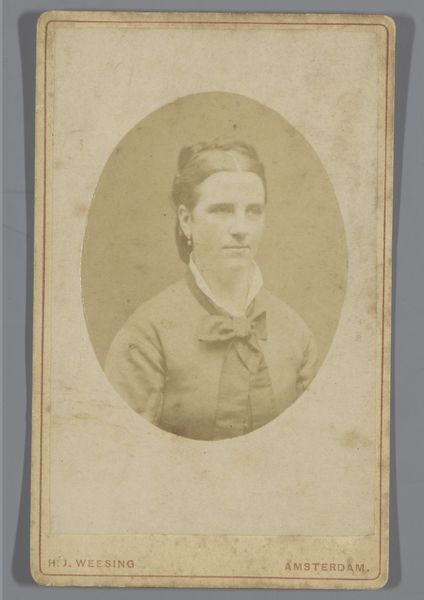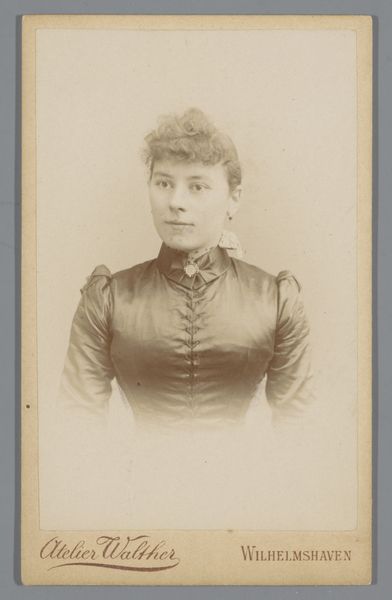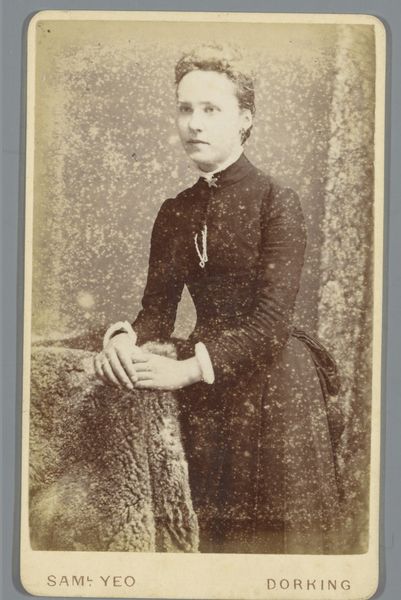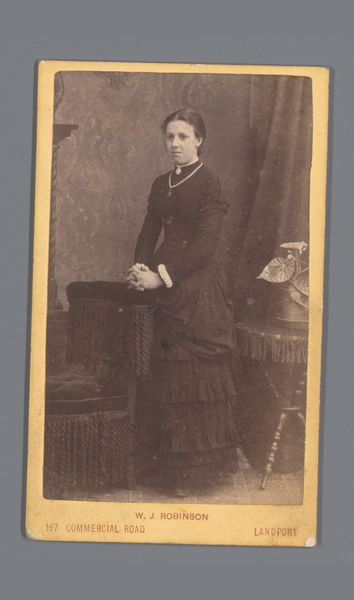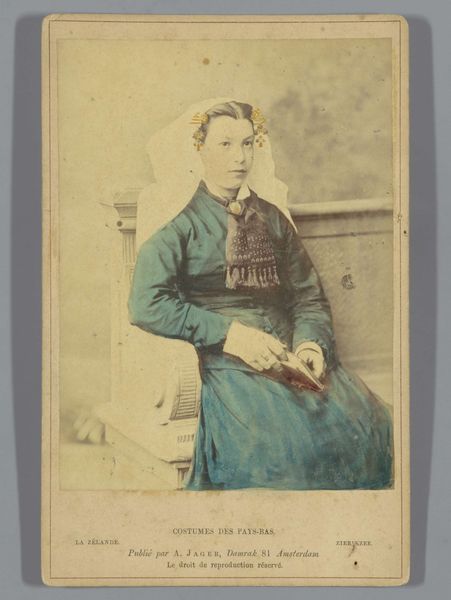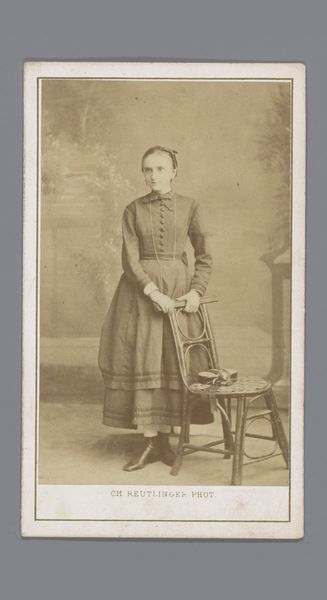
photography
#
portrait
#
photography
#
genre-painting
Dimensions: height 104 mm, width 65 mm
Copyright: Rijks Museum: Open Domain
Curator: This photographic portrait, "Portret van een onbekende vrouw, staande naast een fauteuil," comes to us from 1884 and was created by Veuve J. van Koningsveld. The sepia tones really set a particular mood. What are your first impressions? Editor: Well, the immediate sense I get is one of restrained dignity. The woman's pose is formal, almost stiff, yet there's a certain vulnerability in her eyes that disrupts any notions of aloofness. She is placed in a historical framework that doesn't necessarily consider the lives of bourgeois women. Curator: It’s interesting you mention vulnerability. Her clasped hands and slightly downcast gaze do seem to suggest a certain internal contemplation. The photograph captures a stillness, a moment suspended in time. And I can’t help but notice the detail of the tassel hanging from her hands—an object that is at once ornamental but possibly also symbolically connected to upper-class standing and power. Editor: Precisely. The tassel and the ornate chair represent a certain socio-economic reality, perhaps hinting at constraints of social expectations during the late 19th century for women who, at this time, start making an active change within their roles in life. Yet the question persists: Who was she? What did she think, what were her experiences in this period? Photography provided the bourgeois subject an ability to memorialize their identities through a public medium. Curator: That's the fascinating mystery of portraits like these, isn't it? The subject’s individual story—the symbolism of dress and posture speaks volumes. Even the very material of early photographs; they are a palimpsest, concealing a narrative and making the viewer desire access to information left unsaid. Editor: Absolutely. By questioning the constructed image, we can consider how a medium like photography simultaneously reinforces and challenges the status quo. Her representation speaks volumes regarding an historical and on-going relationship to the role of women through history. Curator: This exploration leaves me thinking about the gaze itself – whose gaze are we seeing? Is it merely the photographer's or perhaps something she, as the sitter, wishes to project onto the world? Editor: A crucial point. It calls into question who has control of the narrative. Maybe the true power resides in her enigmatic stillness, challenging our assumptions and projecting questions on historical power structures.
Comments
No comments
Be the first to comment and join the conversation on the ultimate creative platform.

